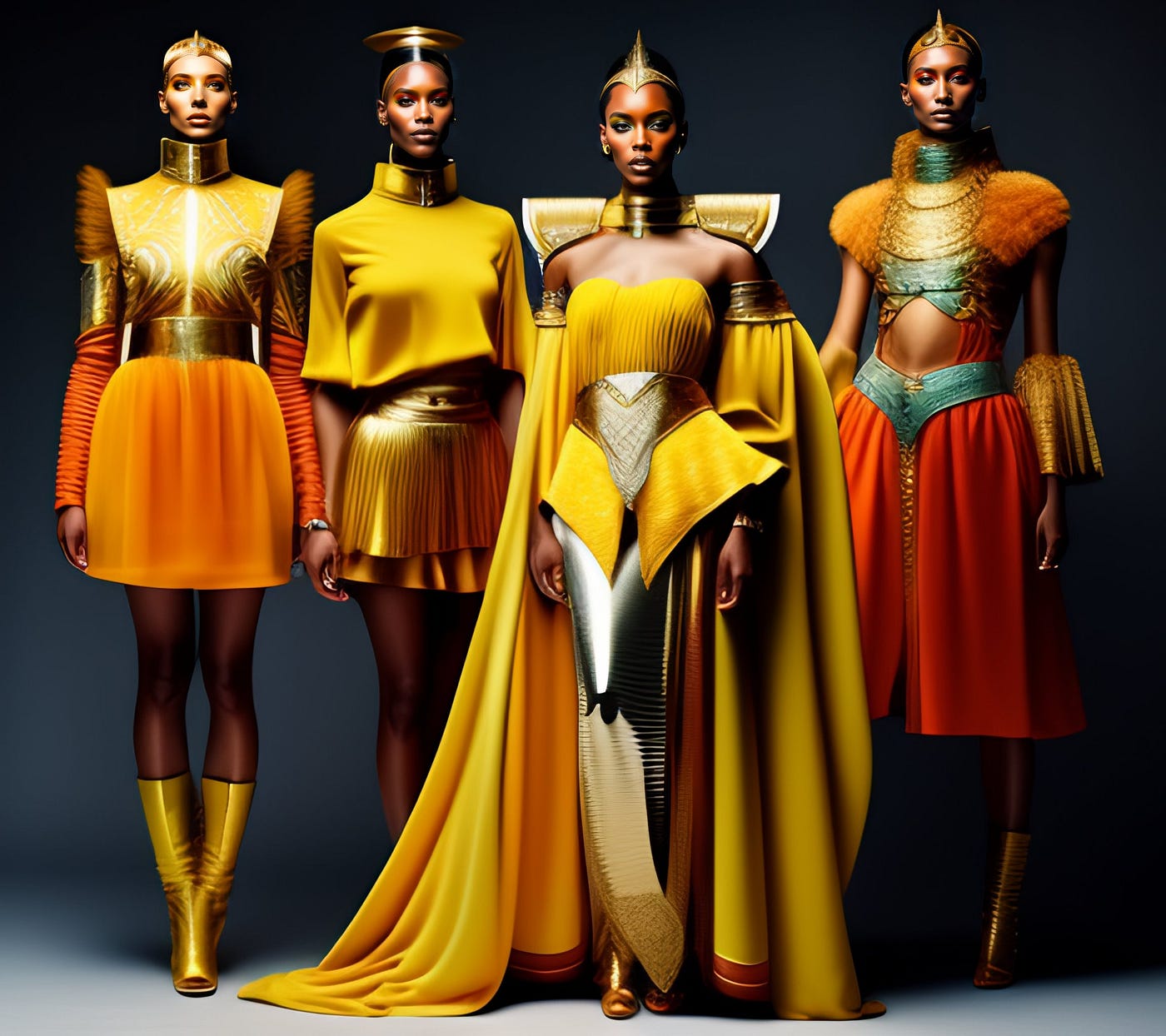By Micah Essien
29 October 2023 |
5:00 pm
“What you wear is how you present yourself to the world, especially today when human contacts are so quick. Fashion is instant language,” Miuccia Prada. Undoubtedly, fashion is more than the clothes we wear; it is a genuine reflection of culture, values, and individuality. The fashion world has an undeniably deep-seated impact on society, influencing…

“What you wear is how you present yourself to the world, especially today when human contacts are so quick. Fashion is instant language,” Miuccia Prada.
Undoubtedly, fashion is more than the clothes we wear; it is a genuine reflection of culture, values, and individuality. The fashion world has an undeniably deep-seated impact on society, influencing perceptions, behaviours and even self-esteem.
Fashion is an intrinsic part of human culture, shaping identities, influencing perceptions, and reflecting the values and dynamics of society. It is a dynamic force that constantly evolves and adapts to the ever-changing world. Understanding how fashion influences society is not only an exploration of clothing but a deeper examination of the human experience itself. As fashion continues to evolve, so too does its impact on the world around us.
This article explores the intricate relationship between fashion and society, delving into the various ways in which fashion exerts its influence.
1. Cultural Expression
Fashion acts as a positive form of cultural expression. Different societies have clothing traditions and styles that capture their history, heritage and values distinctly. When we don traditional attire or incorporate cultural elements into our outfits, we celebrate and preserve the rich tapestry of human history. Fashion empowers individuals to communicate their cultural identity and heritage to the world.
2. Social Identity
Fashion shapes social identity. Specific clothes worn can signal affiliations, beliefs and social status. Subcultures, like punk or hip-hop, have been defined and united by their unique fashion aesthetics. The way we dress often determines how others perceive us and can influence our ability to connect with like-minded individuals.
3. Self-Expression
Fashion provides a powerful medium for self-expression. Clothing is used to express personalities, moods, and individuality. For instance, someone who wears vibrant, eclectic outfits might be seen as creative and outgoing, while the one who favours classic, minimalist attire may be viewed as sophisticated and reserved. Fashion choices reflect our evolving sense of self and can be a very effective means of personal empowerment.
4. Economic Impact
The fashion industry has significant economic implications. It is a colossal global business that drives innovation, job creation, and consumer spending. Designers, manufacturers, retailers – they all contribute to a substantial portion of a country’s GDP. Additionally, trends and consumer preferences can influence the success or failure of brands, impacting the economy on a large scale.


5. Social and Environmental Responsibility
Fashion is not just about aesthetics or self-expression; it is also a realm where social and environmental issues converge. Its influence extends to advocating for sustainability and social responsibility. The fashion industry is under increasing scrutiny for its impact on the environment, with concerns about water usage, waste, and pollution. There is a growing awareness of labour practices within the industry, promoting fair wages and ethical working conditions. Fashion’s influence extends to advocating for sustainability and social responsibility.
6. Media and Celebrity Endorsement
Celebrities are powerful influencers in the fashion world. Their endorsement of specific brands or promotion of styles can instantly lead to trends going viral and undoubtedly shaping consumer behaviour. With the rise of social media, it has become easier for celebrities to communicate their fashion choices directly to their fan base. Gone are the days when fashion was confined to the runways; now, it is accessible and relatable through the daily lives of celebrities.
7. Gender and Identity
Fashion has always played a crucial role in challenging traditional gender norms. Designers, models, and consumers alike have increasingly pushed boundaries, blurring the lines between masculine and feminine fashion. This has contributed to more inclusive and diverse representations of gender and identity in society.
This post was originally published on this site be sure to check out more of their content.









